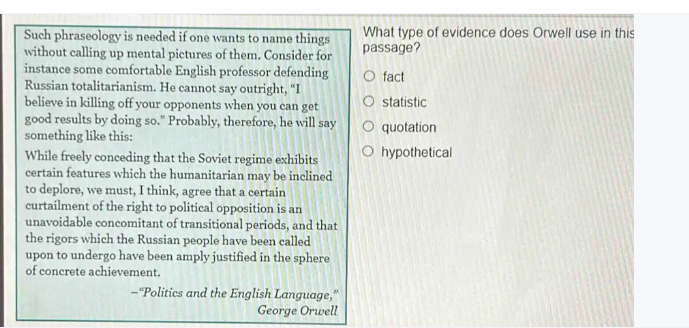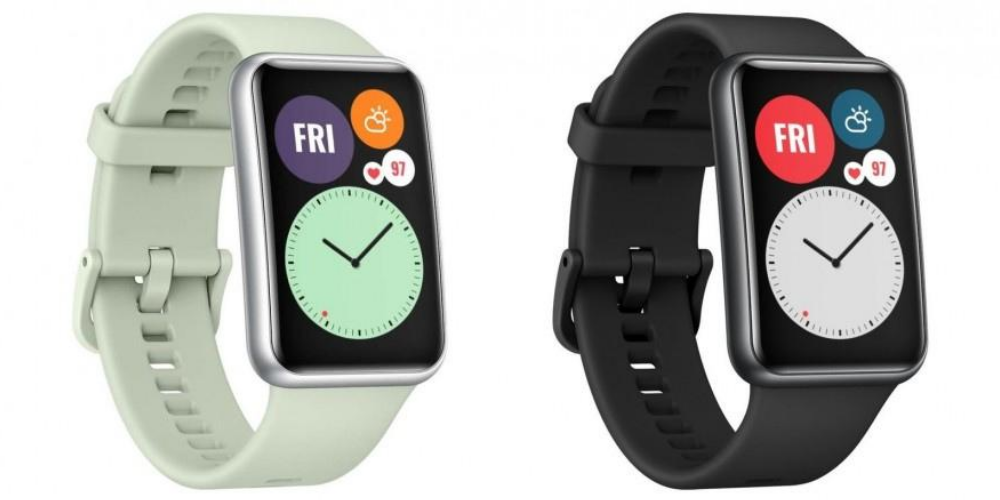Grasping the kinds of evidence as facts, measurements, citations, and speculative situations is vital for surveying believability and legitimacy in any type of talk. Facts are irrefutable proclamations upheld by proof or perception, giving substantial data. Statistics are the study or survey of numerical data that provide quantitative insights into trends or patterns.
Direct citations and quotations from authoritative sources give arguments credibility and expert opinion. Hypothetical situations present really paused for a moment to think about circumstances to show prospects or results. In order to distinguish what type of evidence does orwell use in this passage? fact statistic quotation hypothetical, critical analysis and context evaluation are required.
Steps to Know the Kind of Evidence
There are many different kinds of evidence, each of which serves a distinct purpose in substantiating claims or arguments. Here is an itemized investigation of how to recognize whether the proof is a reality, measurement, citation, or speculative:
Facts
Realities are proclamations that can be demonstrated or checked equitably. They address bits of insight about the world in view of exact proof or unquestionable perceptions. Let’s look at how to identify facts. Credible sources like academic research, expert opinions, or primary data back up the facts.
Realities are clear and not exposed to closely-held convictions. Within the relevant academic or scientific community, facts frequently enjoy consensus. They are broadly acknowledged as evident in view of accessible proof.
Statistics
Numerical data are used in statistics to provide quantitative insights into relationships, trends, or patterns within a population or sample. Statistics are easy to identify. Data in the form of percentages, averages, rates, or correlations is known as statistics. They are obtained from information investigation and are frequently used, to sum up discoveries.
Look for descriptions of data collection methods in surveys, studies, or research reports. Substantial measurements depend on strong examining and information assortment methods. Measurements require an understanding of their specific circumstance. They give quantitative proof to help contentions or outline patterns.
Quotations
Citations are precise or summarized proclamations from solid sources that give legitimate conclusions, bits of knowledge, or data. Most of the time, quotes are attributed to specific people, experts, or authoritative sources and are enclosed in quotation marks. Arguments benefit from their expertise and credibility.
Arguments are bolstered by utilizing quotations that draw on the authority and expertise of the source. They are effective at conveying the viewpoints of acknowledged authorities. The original statement should be accurately reflected in the quotation. They are utilized to bolster arguments with the weight of firsthand accounts or expert opinion.
Hypotheticals
Hypothetical scenarios are hypothetical examples or situations used to illustrate theoretical arguments, possibilities, or consequences. Hypotheticals frequently utilize contingent terms like “if,” “could,” or “envision.” They present situations that may not be founded on real occasions but rather are helpful for hypothetical conversations.
Hypotheticals are constructed to investigate potential outcomes or scenarios rather than being based on actual evidence or observed phenomena. They are utilized to explain ideas, investigate options, or challenge suppositions. In discussions, hypotheticals encourage creative thinking and critical thinking.
Step for Using Gauth
Utilizing Gauth or any man-made intelligence model commonly includes a direct interaction. To use Gauth AI effectively, follow these steps:

Step 1. Input Question
Make your question or prompt in natural language first. Be specific about the kind of information or assistance you require from the AI. This could be as simple as asking a question, requesting information on a particular subject, producing original content, or requesting technical support.
Step 2. Send a Query
When you input your inquiry, submit it through the assigned info field or connection point given by the Gauth man-made intelligence stage. The simulated intelligence will then, at that point, process your question, investigating the text and creating a reaction in light of its prepared model and calculations.
Step 3. Processing Time
Contingent upon the intricacy of your question and the server load, handling times might shift. While responses can be generated almost immediately in some cases, more complicated queries or tasks may take anywhere from a few seconds to several minutes.
Step 4. Obtain Results
The AI will generate and present the results based on your query following processing. Depending on the nature of your query, the results may appear as text responses, data summaries, creative outputs like stories or poems, code snippets, or other types of information.
Final Talk
Effectively navigating information is made possible by mastering the identification of facts, statistics, quotations, and hypotheticals. By examining proof for its source, setting, and certainty, one can improve decisive reasoning abilities and make informed decisions in conversations, exploration, and dynamic cycles.















